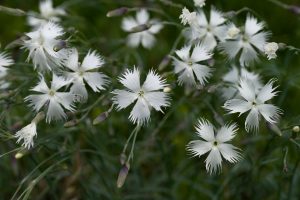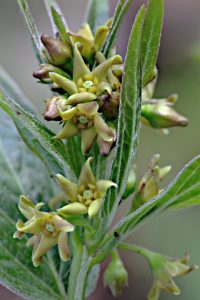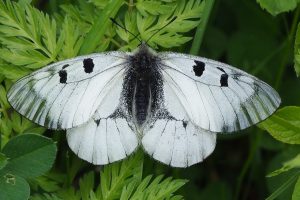We restore flowering sides
Projekt LIFE endemic PANALP sa venuje obnove suchomilných travinno-bylinných spoločenstiev, ktoré sú v súčasnosti ohrozené zarastaním náletovými drevinami, inváznymi druhmi a výsadbami nepôvodných druhov drevín. Obnova týchto biotopov prebieha primeraným odstránením drevín a následne obnovou trvalo udržateľného pôvodného hospodárenia (pasenia a kosenia), ktoré tu chýba už niekoľko desaťročí. To prináša benefity nielen pre cieľové biotopy a druhy, ale aj pre miestnych poľnohospodárov, s ktorými pri obnove hospodárenia spolupracujeme. Na Slovensku projekt prebieha na 17 územiach európskeho významu v západnej časti krajiny od Malých Karpát až po Strážovské vrchy, v Maďarsku na ďalších 7 územiach. Cieľom projektu na Slovensku je taktiež zlepšenie stavu populácií a biotopov vzácnych druhov európskeho významu. Z rastlín ide o endemické taxóny klinček včasný Lumnitzerov (Dianthus praecox subsp. lumnitzeri) a veľmi ohrozený popolavec dlholistý moravský (Tephroseris longifolia subsp. moravica). Z bezstavovcov sú cieľovými druhmi fuzáč veľký (Cerambyx cerdo),priadkovec trnkový (Eriogaster catax), modráčik čiernoškvrnný (Maculinea arion), jasoň chochlačkový (Parnassius mnemosyne) a jasoň červenooký (Parnassius apollo). V Maďarsku sú cieľovými vzácne endemické rastliny – feruľa Sadlerova (Ferula sadleriana), ľan (Linum dolomiticum), luskáč (Vincetoxicum pannonicum) a kontinetálny stepný druh katran tatársky (Crambe tataria).
Partnermi projektu sú Štátna ochrana prírody SR, pre lokality v Maďarsku Správa Národného parku Duna–Ipoly a Lesná správa Pilisi Parkerdő.
Ďakujeme správam CHKO Ponitrie, CHKO Biele Karpaty, CHKO Malé Karpaty, CHKO Strážovské vrchy, CHKO Záhorie, Správe NP Duna–Ipoly, Lesnej správe Pilisi Parkerdő Správe a miestnym hospodárom za ich pomoc s realizáciou projektu.
Pre viac informácií o projektových druhoch, biotopoch, ale aj spôsoboch ich obnovy, prípadne pre navigáciu pri vašich vlastných snahách na podobných lokalitách sa môžete poradiť s našimi kolegami:
Mário Duchoň, duchon@broz.sk, tel. číslo: 0915 165 677
Pavol Littera, littera@broz.sk, tel. číslo: 0948 177 555
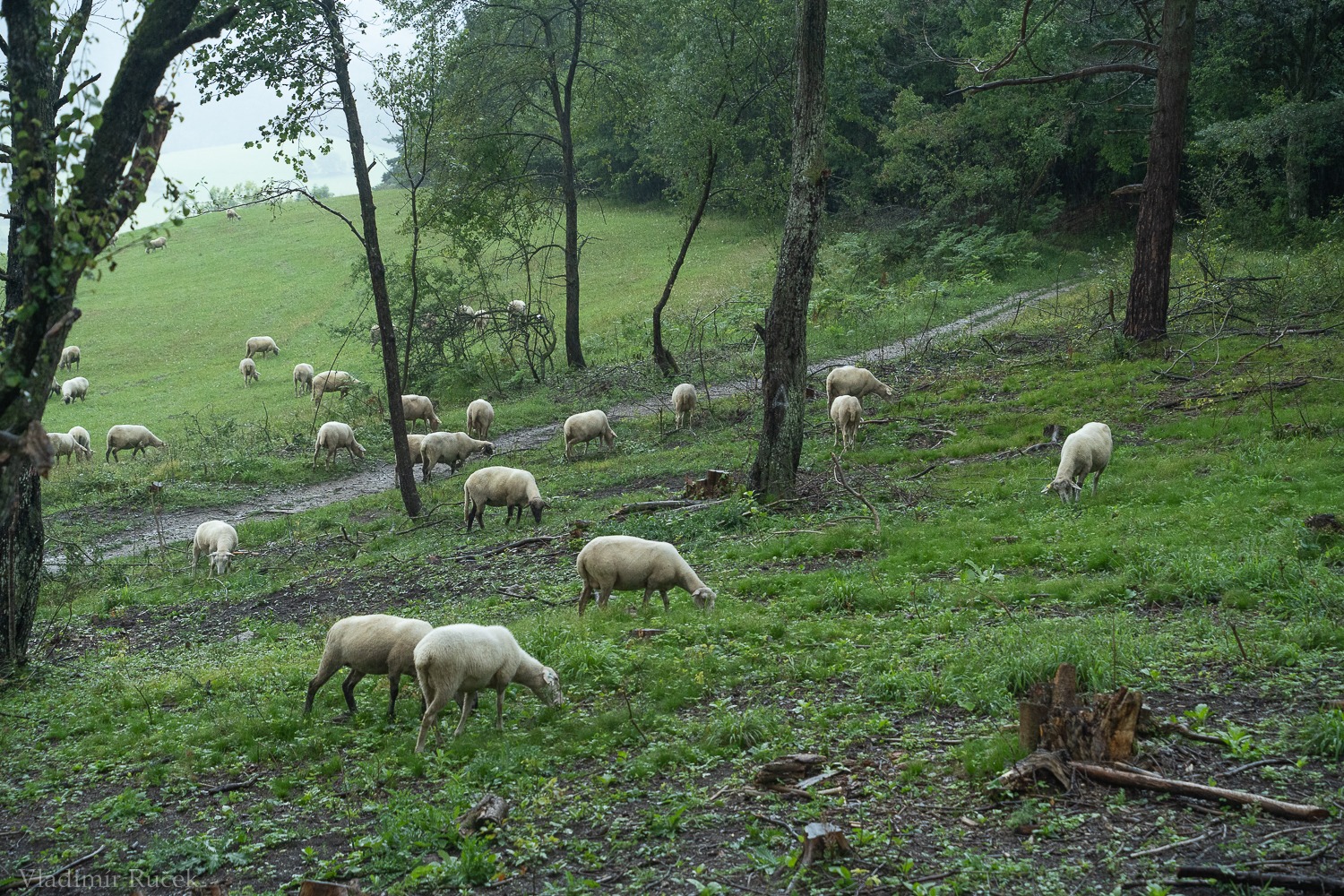
Restoration of pasture habitats in Súľov
The Súľov hills are famous not only because of picturesque sceneries of rock gates and towers, but also because of a wealth of rare flora and fauna. Among other things, they were known among botanists in the past as a famous botanical site.
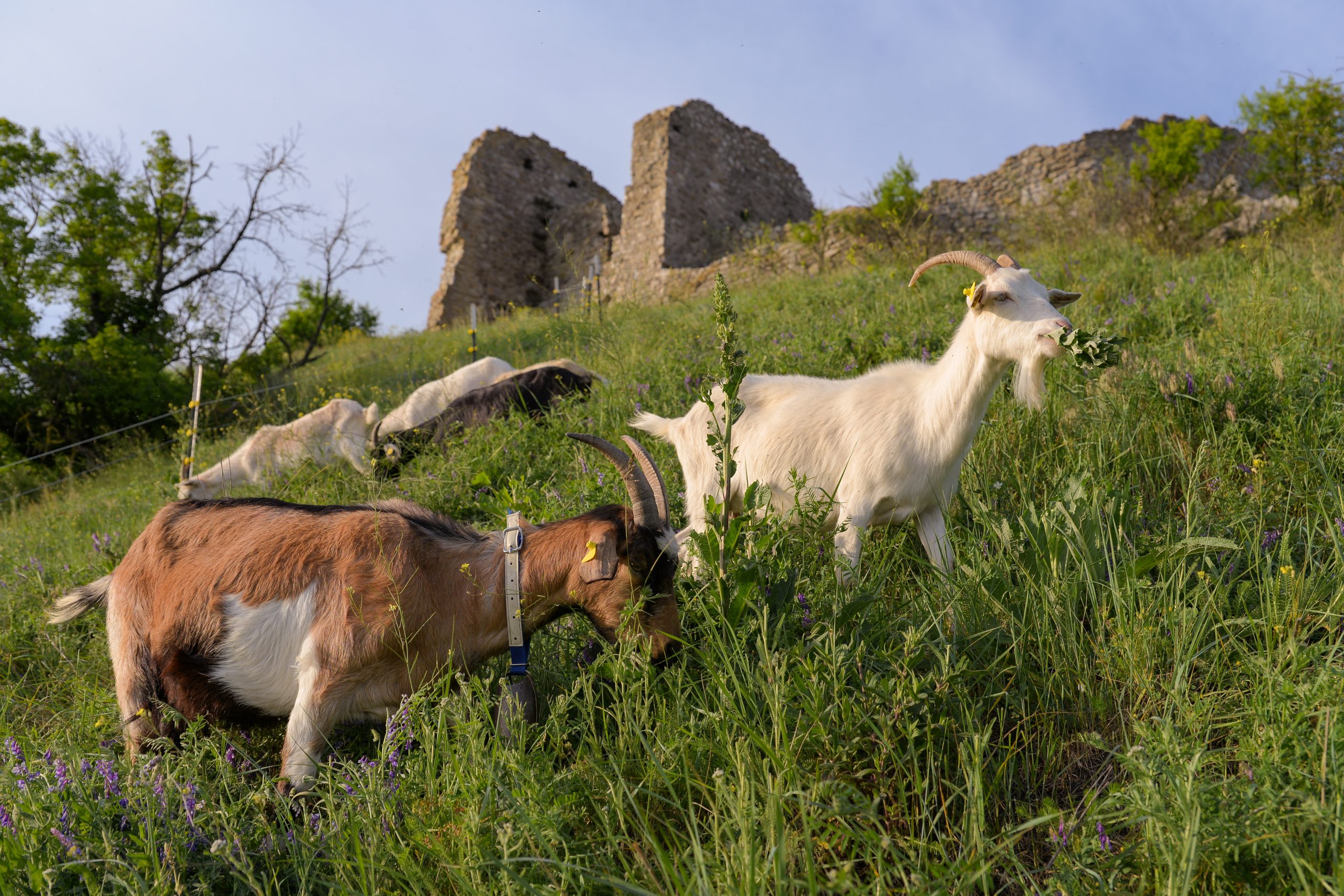
When grazing is succesfull
For several years now, we have successfully grazed sheep and donkeys at Devín Castle, and this year we managed to expand the pasture to the Devín castle Rock - which is located in the southern part, directly under the walls.
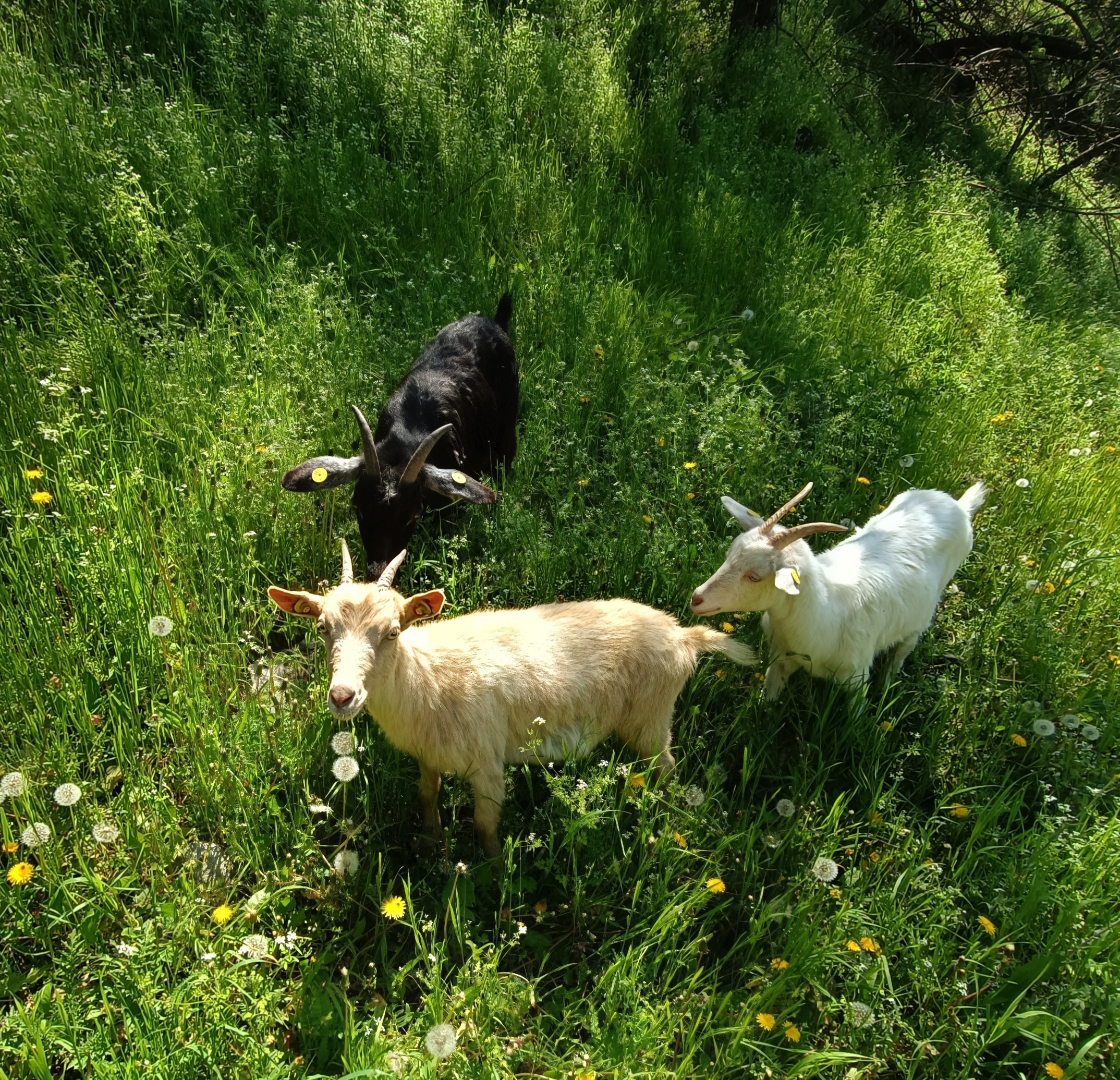
Goat grazing on the Devín castle rock
In addition to the successful activities in the Strážovské vrchy, as part of the LIFE Panalp project, we also started to restore rare grass habitats in the Samll Carpathians. In the westernmost Slovak mountain range, this spring, in cooperation with the Museum of the City of Bratislava, we started grazing on the Devín Castle Rock.

We have taken a small step for humanity in the White Carpathians, but a big step for nature
Grazing restoration is one of the golas of the project LIFE Panalp, from which the weekend activity was financially supported. In White Carpathians we are grazing goats in more localities already so we started now also in Babiná and we hope that the butterfly king will be atracted back to the locality.

We started grazing on Krasín hill
Krasín hill starts to look like it used to, thanks to our grazing restoration.
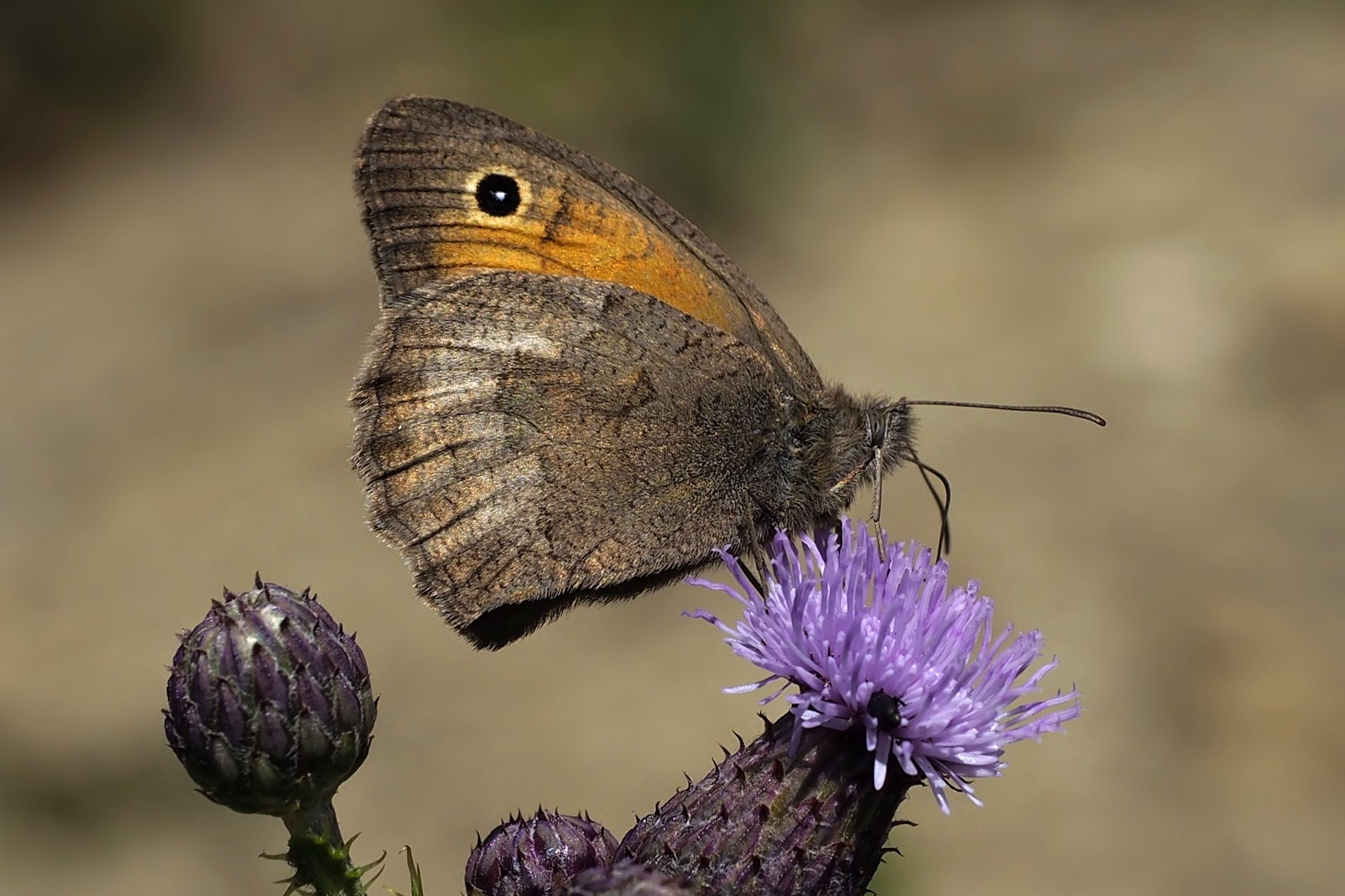
Dry-lovers or who likes the dry?
There are habitats which can stand dry weather much better than others. We call them drough-loving habitats or xerotherms.

Beauties of diverse landscape
The Slovak mountains hide small treasures, which many have no idea that they exist in our country. They are wild orchids, and it is the Strážovské and Súľovské vrchy that can boast one of the highest species diversity in Central Europe.
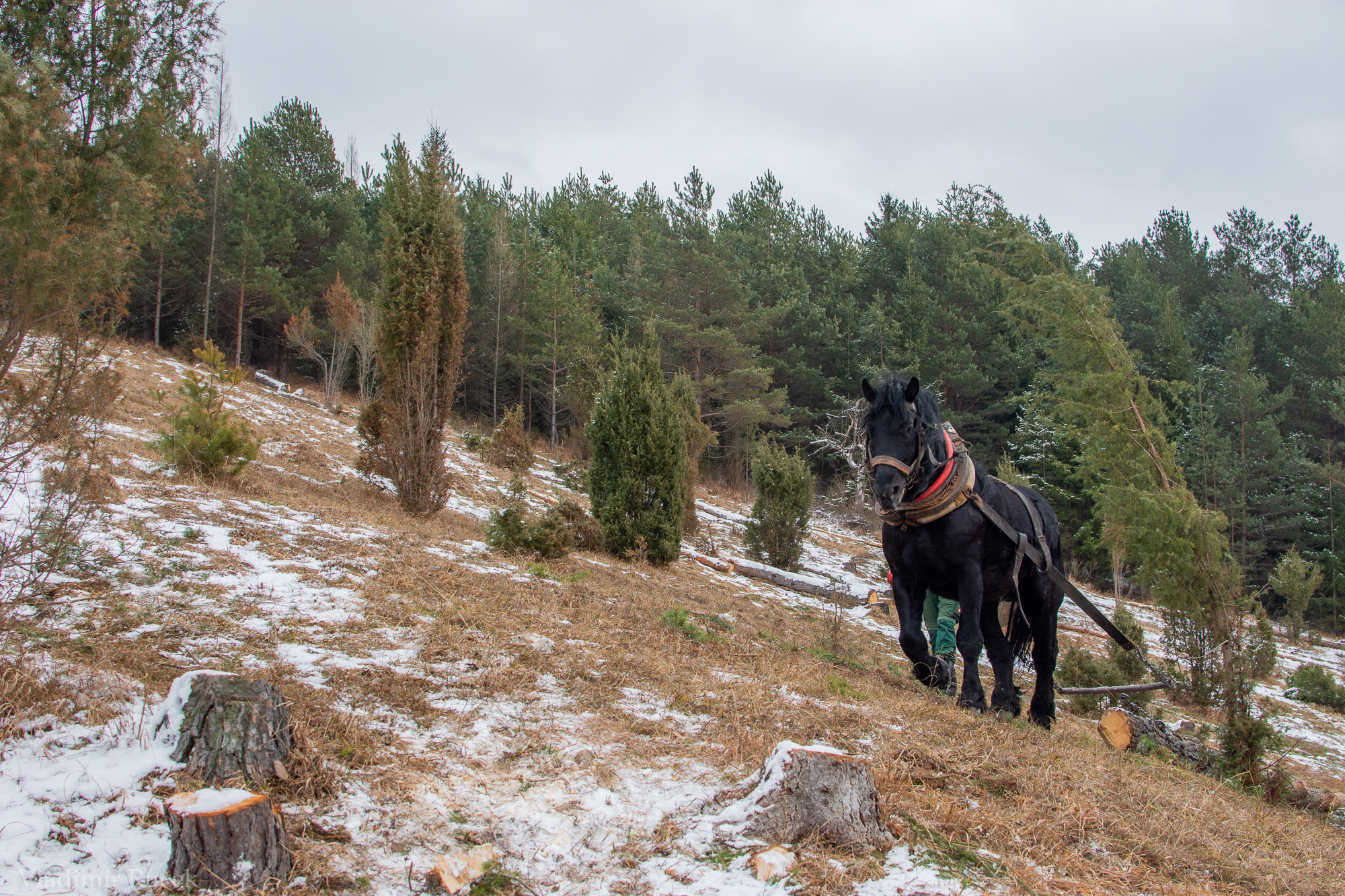
Restoration of Svarkovica protected area in cooperation with PLA Strážovské vrchy administration
Pine trees and spruce trees gradually overgrew even the territory of Svarkovica prtected area. The shading and acid fallout of needles increasingly changed the ecological factors of the environment, and without human intervention, the rare habitat and the species bound to it would gradually disappear even from this hotspot of biodiversity.
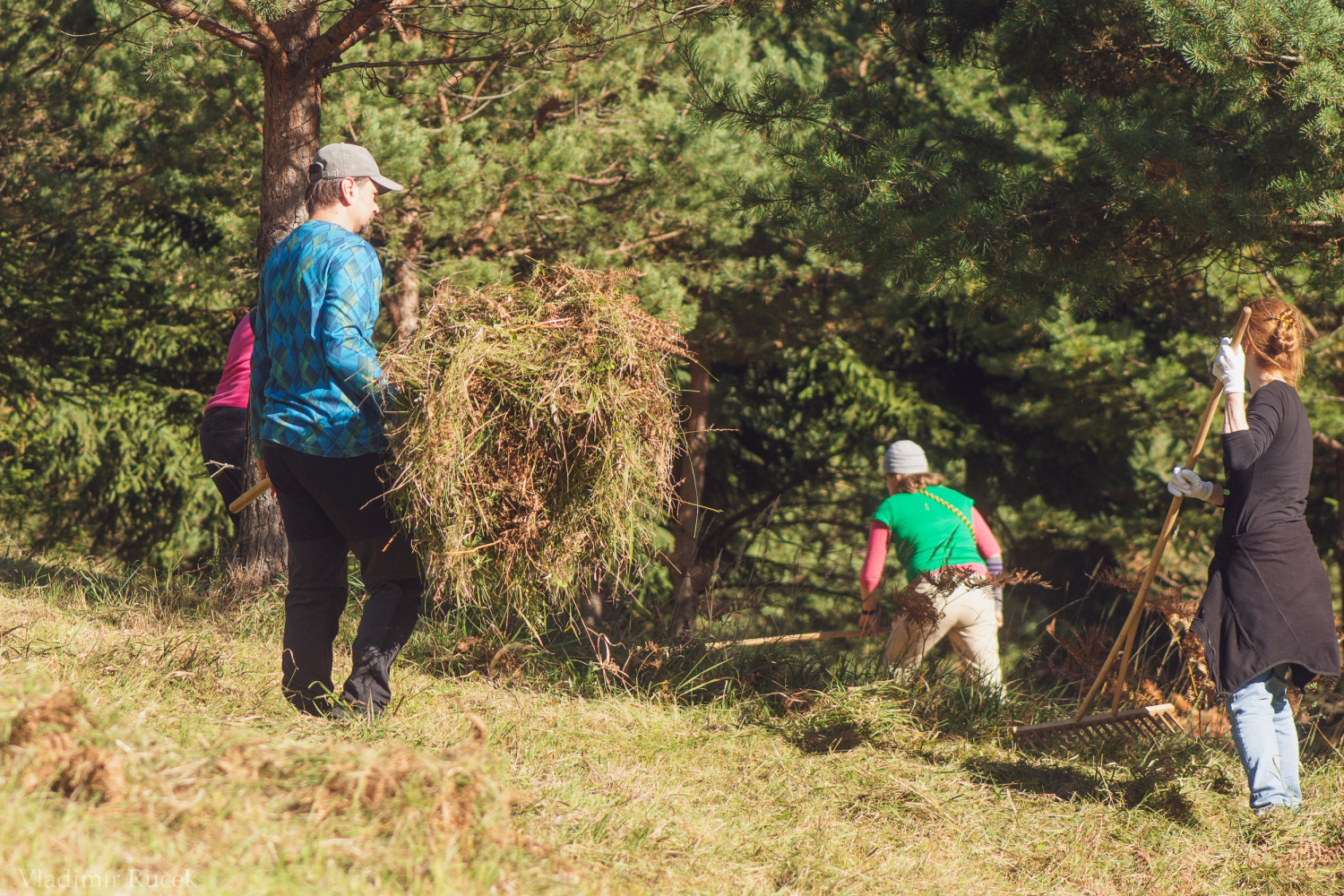
Working with volunteers to clean up sites
One of the goals of the LIFE PANALP project is the involvement of volunteers in nature conservation. In this way, event participants will not only help nature, but also learn a lot about active care of target habitats and species. Information thus reaches the public through the experiences of individuals. We have therefore organized several brigades in autumn 2021.

At the location in Strážovské vrchy, we helped a mountain Apollo butterfly (Parnasius apollo)
At the site of the maountain Apollo, one of our rarest butterflies, we cleared approximately 1 hectare of debris from invasive trees. Since this light-loving species of butterfly requires sufficient space with nutritious and nectar-producing plants. We believe that this intervention will greatly help the maintenance of this species in the territory and, among other things, will also support other species of rare plants and insects.

Saving habitats with current and former DINPD staff
On 23 October 2021, an enthusiastic team of current and former DINPD staff members and their relatives devoted their Saturday morning to hands-on nature conservation at the Szársomlyó site of the LIFE endemic PANALP project. They cut down overgrown bushes and smaller trees on the most Southern habitat of the rare and vulnerable Vincetoxicum pannonicum.
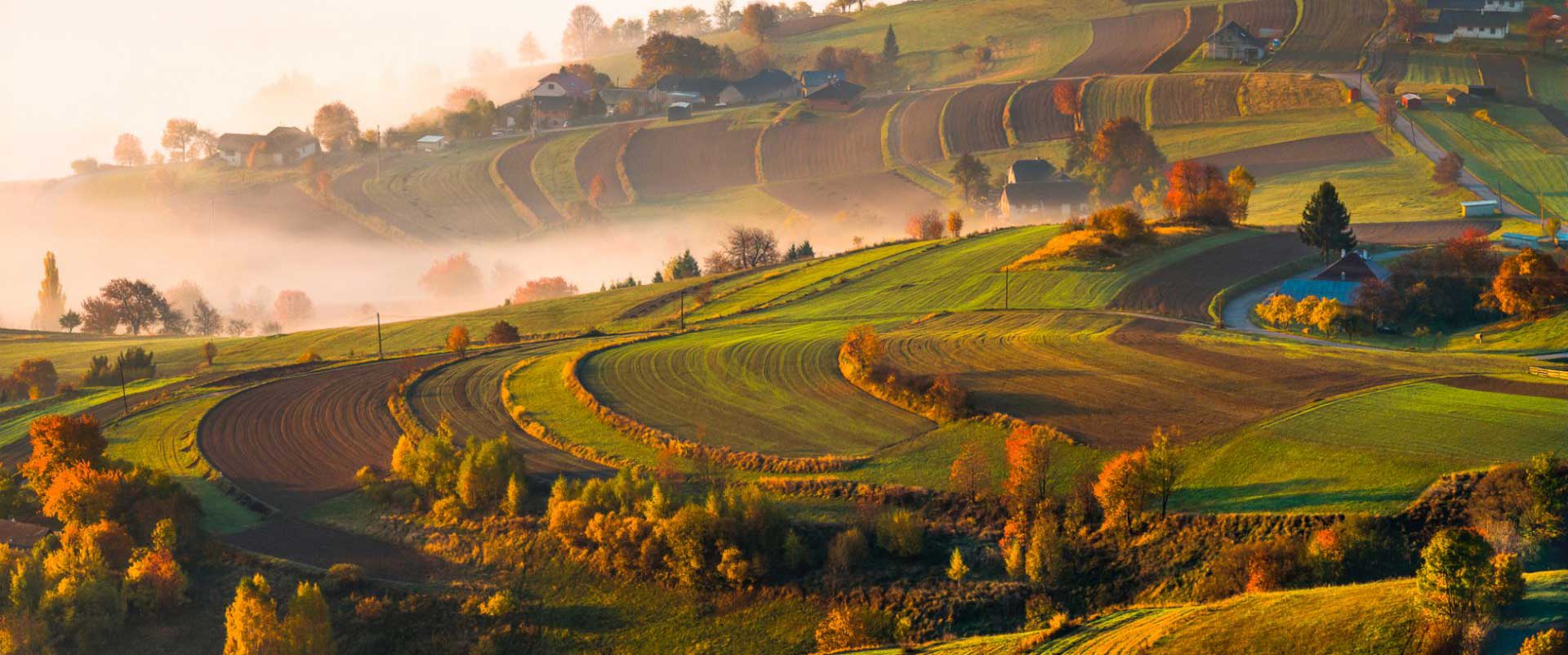
Sign the Living Country Petition
Intensive farming on large areas literally erased life from the country. This is largely due to a poorly designed agricultural policy that encourages intensive farming, which creates a huge burden on the environment. Variety disappears from the rural landscape and with it also birdsong, butterflies and pollinators. If we lose the natural diversity of the landscape, we will also lose its health and resilience.
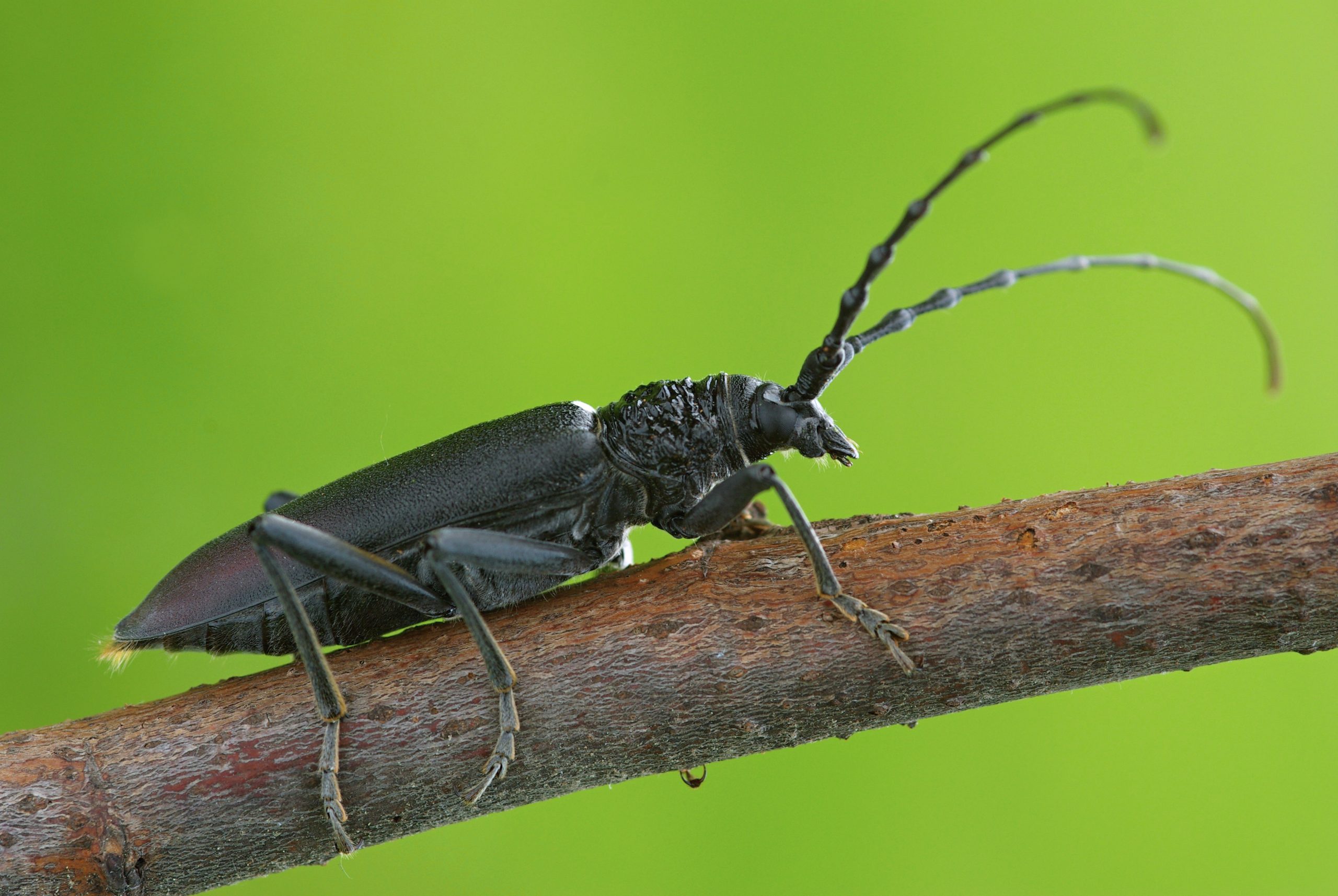
An international project is focusing on the return of pasture
The international project LIFE PANALP is focusing on the return of grazing as a tool for nature protection. Together with its Hungarian partners, the Regional Association for Nature Conservation and Sustainable Development (BROZ) will focus on the protection of several species of endemic plants and rare animals.

Conservationists, hunters and farmers are calling for landscaping
Conservationists, hunters, farmers, beekeepers and non-state forest owners are calling for landscaping for nature and people. In the memorandum "For a Healthy Country", they appeal to the Government of the Slovak Republic and the Ministry of Agriculture and Rural Development of the Slovak Republic appeal.

We organized a forestry excursion
At the end of last week, within the LIFE endemic PANALP project, we prepared a two-day field trip to the Duchonka forest administration, where we invited employees of the State Nature Conservancy of the Slovak Republic from the Záhorie Protected Landscape Area, Small Carpathians Protected Landscape Area, Ponitrie Protected Landscape Area and foresters from Lesy SR .
Project title: Conservation of endemic species and dry grassland habitats in the contact zone of Pannonian and Alpine bioregions
Project scheme: LIFE+, Nature and Biodiversity
Project acronym: LIFE endemic PANALP
Project code: LIFE19 NAT/SK/000895
Duration: 01/09/2020 – 28/02/2027
Budget: 5,279,511 Euro (75 % EU financial contribution)
Project focus: The main goal of the project is to improve the status of 3 priority habitats of European importance, 6 species of plants of European importance (of which 5 endemic) and 5 species of insects of European importance at 17 sites of the NATURA 2000 network in Slovakia and 7 sites in Hungary. At present, the project sites are threatened by overgrown trees and expansive grasses, as well as plantings and the spontaneous spread of non-native species, due to the abandonment of traditional management. Target species populations are often small and fragmented.
Through appropriate management measures, the project will significantly contribute to the construction of the NATURA 2000 network in Slovakia, to the improvement of its functionality and the preservation of the natural heritage of the regions of Slovakia. In addition to improving the condition of the habitats in question, the aim of the project is to ensure sustainable care for the restored areas and to restore ecosystem services. A substantial part of the project’s activities will be implemented in cooperation with local farmers and communities, which will also bring significant socio-economic benefits and contribute to job creation in the regions.
Specific goals:
- Restoration of grassland habitats 6210 *, 6240 * (in Hungary also habitat 6190) and securing of long-term care for them
- Improving the state of habitats and populations of Dianthus praecox lumnitzeri in Slovakia
- Improving the state of habitats and populations of Tephroseris longifolia moravica in Slovakia
- Improving the habitat and population of Crambe tataria in Hungary
- Improving the state of Ferula sadleriana habitats and populations in Hungary
- Improving the status of habitats and populations of Linum dolomiticum in Hungary
- Improving the state of Vincetoxicum pannonicum habitats and populations in Hungary
- Improvement of habitats and invertebrate populations Cerambyx cerdo, Eriogaster catax, Maculinea arion, Parnassius mnemosyne and Parnassius apollo in Slovakia
Crambe tataria
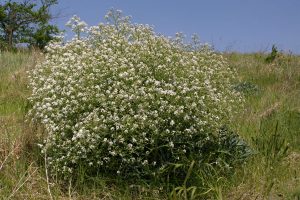
Steppe species, so-called “Steppe runner” reaching the western edge of its area in Pannonia. Endangered due to the decline of traditional management and overgrown sites. Target species in Hungary.
Dianthus praecox subsp. lumnitzeri

(c) Marián Mokráň
Endemic species widespread on rocky steppes on limestones, dolomites and volcanics in western Pannonia and in the foothills of the Carpathians. It is endangered especially by overgrowing of localities and the plantings of non-native trees. Target species in Slovakia.
Ferula sadleriana

(c) Róbert Šuvada
Pannonian endemic and relict, one of the rarest plants in Europe. The locality is threatened by mass tourism and the bite of numerous mouflons. The project covers 90% of the species’ population. Target species in Hungary.
Linum dolomiticum
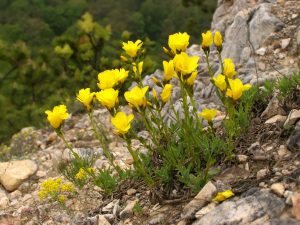
Endemic and pre-glacial relic with a limited occurrence of about 140 ha in the Szénás hills in Hungary. There has been recorded a downward trend in population size. The locality is threatened by trampling by visitors, damage by game and overgrowth by non-native black pine.
Tephroseris longifolia subsp. moravica

West Carpathian endemic with a small area and link to mowed meadows and forest edges, usually in steep or other not so accessible localities. Populations are declining and are threatened by the extinction of traditional farming, overgrowing of sites with woods, and partly by animal bites.
Vincetoxicum pannonicum

(c) Bérces Sándor
Pannonian endemic, the project will cover all of its sites in the three territories of European importance in Hungary. It is endangered by visitors, motorcyclists and overgrown sites with non-native black pine.
Great capricorn beetle – Cerambyx cerdo

(c) Ivan Klučiar
A species tied to old solitary dazzled oaks. Its habitats are disappearing due to the overgrowth of former pastures and the planting of non-native tree species (black pine). One of our biggest bugs. Males have very long tentacles – their length is greater than the rest of the body.
Eastern eggar – Eriogaster catax

(c) Martin Jagelka
A species tied to a sparsely bushy slope and forest edges in lower, warm locations. It is especially threatened by overgrowing of localities due to the abandonment of grazing. Adult butterflies are active at night, but their presence can be detected by typical larval nests. Larvae are most common on sloes, hawthorns and wild pears.
Large blue – Maculinea arion

(c) Viliam Ridzoň
A species associated with dry extensively grazed steppe grasslands with scattered shrubs. It is threatened by overgrowing of habitats due to the abandonment of grazing and planting of non-native trees (black pine). The larvae are tied to the flowers of the Breckland thyme and oregano. They complete their development in the nests of ants (so-called myrmecophilia).
Mountain Apollo – Parnassius apollo

A species associated with the southern slopes with eroded, rocky areas with the occurrence of stonecrops. It is threatened by overgrowing of sites due to abandonment of grazing and secondary succession, as well as plantings of pines and other trees.
Clouded Apollo – Parnassius mnemosyne

(c) Pavol Kolárik
A species of mesophilic and drier grassland habitats and pastures on the edges of forests and forest meadows. It is threatened by the extinction of small forest meadows, overgrowth of forest edges with shrubs and planting of conifers.
Target habitats
6210* – Seminatural dry grasslands and scrubland facies on calcareous substrates (*Important orchid sites)
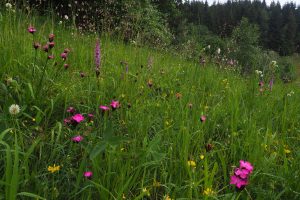
Very diverse communities with a dominance of thermophilic, xeromezophilic species of broadleaf grasses, sedges, perennial herbs, shrubs and semi-shrubs. Many localities are significant for the occurrence of species from the Orchidaceae family. In recent decades, these habitats have been gradually declining due to the cessation of traditional use, overgrown with shrubs, or monocultures of pines and other trees have been planted on them. Due to the great biodiversity of these communities, the occurrence of rare and biogeographically important species, it is necessary to maintain their sufficient representation and connectivity in the country. As relatively nutritious pastures, they are also of economic importance.
6240* – Sub-Pannonic steppic grasslands
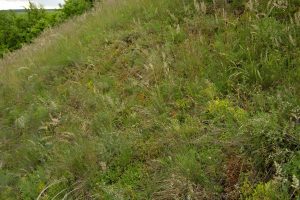
Xerophilic lawns with a predominance of narrow-leaved skeletons, perennial thermophilic herbs, shrubs, semi-shrubs and numerous spring-flowering terophytes. Typical steppe communities at the foot of the Carpathians and in Pannonia linked to drier and warmer areas or shallower and drier soils than communities of habitat type 6210 *. Due to the abandonment of grazing, secondary succession and planting of wood – often non-native black pine, habitats of these communities are gradually disappearing. They are a habitat for many rare species of plants and animals.
6190 – Rupicolous pannonic grasslands

Rocky steppe communities on limestones and especially dolomites with the occurrence of dealpine (mountain) plant species, as well as a representation of various endemic species. As less productive, rocky habitats have often been planted with Scots pine, black pine and manno ash, which has severely damaged many sites. This habitat is targeted in the project only in Hungary.
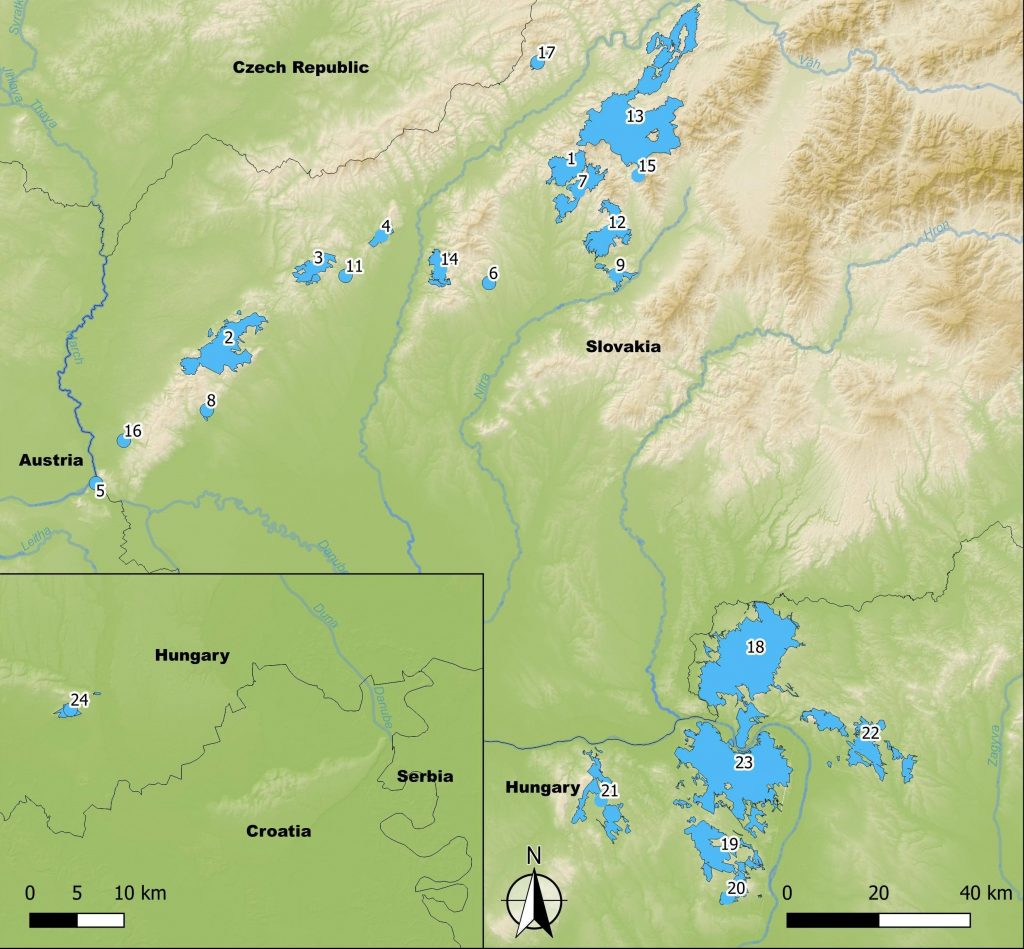
Activities:
A. Preparatory actions
A1 Expert study on the ecology and optimal management of Linum dolomiticum
A2 Expert study on restoration and long-term management of dry grassland habitats in Slovakia
A3 Obtaining technical documentation and necessary permissions for infrastructure for action C3
B. Purchase/lease of land and/or compensation payments for use rights
B1 Land purchase and long-term lease
C. Conservation actions
C1 Restoration management of target species and target habitats
C2 Reintroduction of extensive grazing
C3 Diverting the pressure of mass tourism and game from target species
C4 Propagation of target species on project sites
C5 Restoration of stepping stone habitats for target insect species
D. Monitoring of the impact of the project actions
D1 Monitoring of project impact on target species and habitats
D2 LIFE performance indicators monitoring
D3 Assessment of project impact on ecosystem services
D4 Assessment of projects socio-economic impacts and impact of dissemination actions
E. Public awareness and dissemination of results
E1 Awareness raising – public
E2 Awareness raising – key stakeholders
E3 Replication toolkit
E4 Networking and policies
E5 Developing of volunteer involvement
F. Project management
F1 Project management and reporting
F2 Project bookkeeping, financial management and auditing
F3 After-LIFE plan
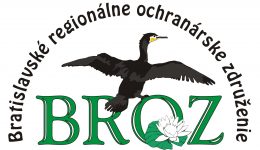


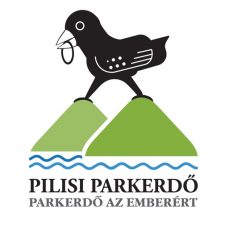
For more information about project species, habitats, but also about means of their protection and management, eventually, if you plan to do something similar on other sites, you can consult with our colleagues:
Mário Duchoň, duchon@broz.sk, tel. number: 0915 165 677
Pavol Littera, littera@broz.sk, tel. number: 0948 177 555





